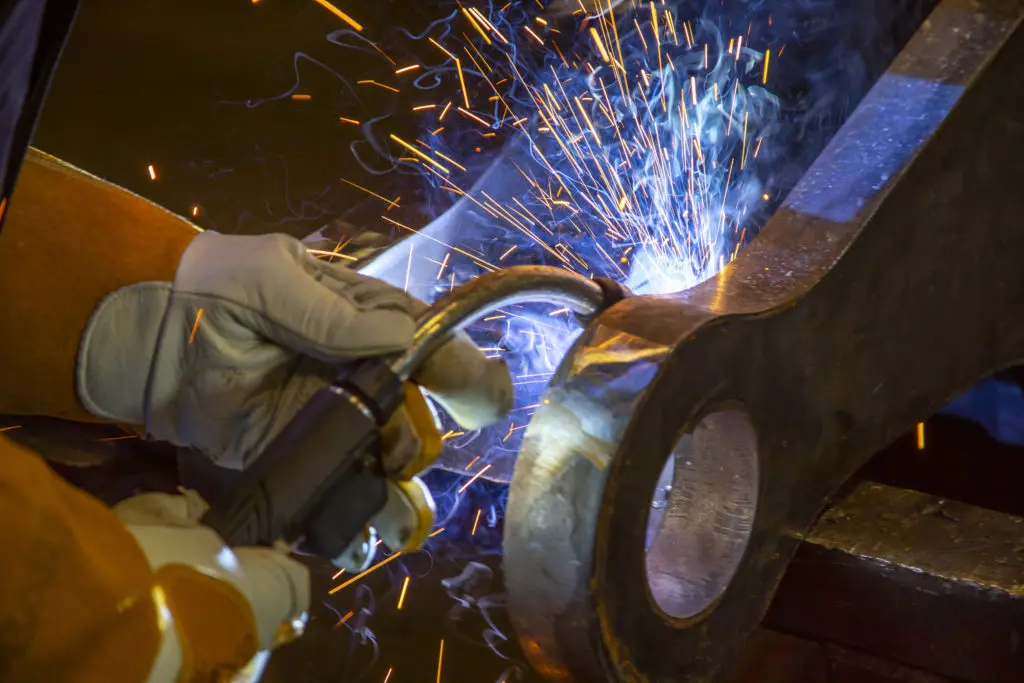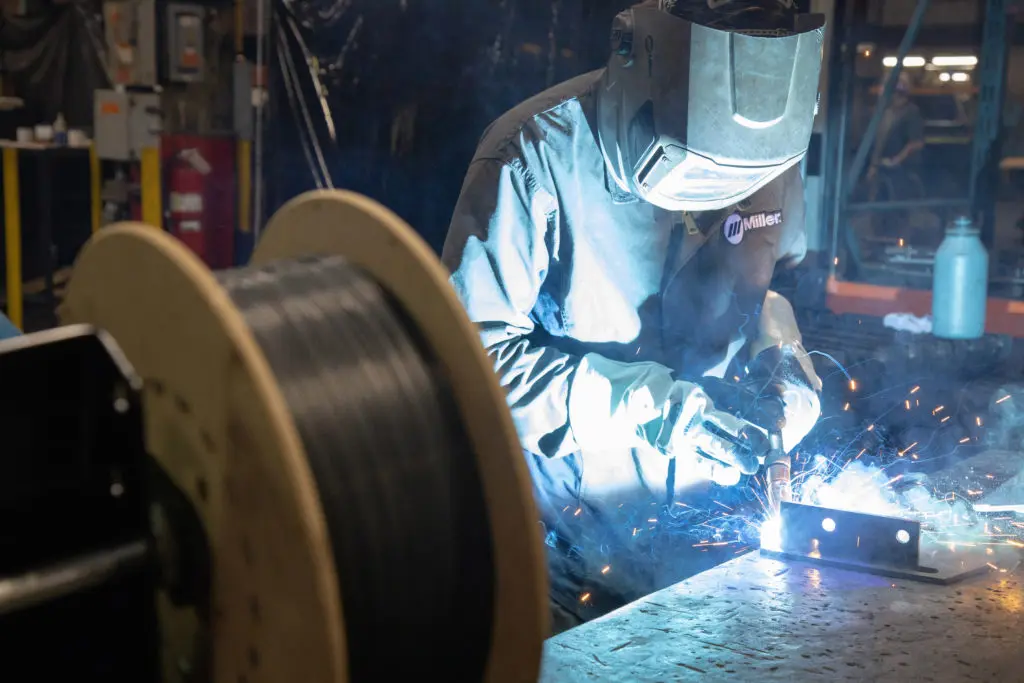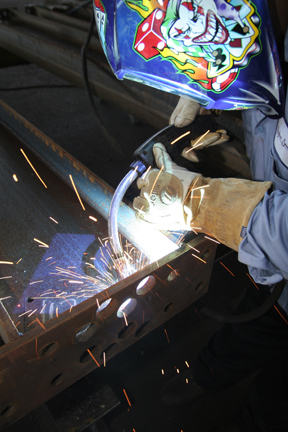How to Make Process Improvements Through a Filler Metal Conversion
In high-production welding operations, whether it’s general manufacturing, automotive, railcar or other industries, much is at stake if errors are made. There is the potential for warranty issues, along with the associated cost and safety risks should a faulty part enter service. Adding to that, companies may experience lost productivity and missed deadlines or high costs for labor and rework.
For that reason, it is important for companies to assess their welding operation — upstream to downstream, including the filler metals being used. In many cases, a filler metal conversion can be at the heart of making process improvements.

The right mindset
When approaching a filler metal conversion, it’s important for stakeholders to keep an open mind and be honest about where the company needs to make improvements.
For example, the facility may be experiencing weld quality issues or challenges with welder skill. Or they may be using a welding process with less-than-optimal efficiency that affects productivity, with low deposition rates and slow travel speeds further hindering throughput. Make note of these issues.
A well-thought-out filler metal conversion can help address these problems and potentially speed up welding, allowing for more parts to move through the cell and freeing up welding operators for other tasks.
Stakeholders in high-production welding operations also need to look beyond the immediate cost changes that may be associated with a filler metal conversion. It is common for a more expensive filler metal to provide benefits that pay off through savings in labor, along with a reduction in rework and downtime. Understanding that total cost benefit of a conversion takes time and data.
Be open to the time necessary for demonstrations, audits and trials. Have a point person who can champion the process in conjunction with the filler metal manufacturer and welding distributor.
The trial process
To determine whether a company is a candidate for a filler metal conversion, it’s important to establish a baseline of the welding operation — from start to finish of a part. Consider some key questions as part of the audit process.
- Are there pre-weld activities, like grinding, and how long do these take?
- How many parts are being made in a given amount of time?
- How many welders are working in the weld cells and what is the cost of that labor?
- How much time is spent on rework?
- How much filler metal is being used and what is the cost?
- Is post-weld cleaning needed? If so, how long does it take?
Stakeholders can get answers to these questions through a time study that in turn allows for a cost calculation to make that part. In some cases, companies may have production data, which can expedite the time study. The total size of the operation and whether welding is automated or manual are also important factors to consider.

In an automated welding cell, a time study can often be quicker. Data is much easier to capture and more consistent for a robot. There may be fewer cells to assess as opposed to a whole line of welding operators who may have varying techniques and have to spend time on non-welding activities. However, these activities, such as organizing, moving and positioning parts, are a necessary part of the whole process.
But the goal for both operations is to identify areas for improvement and determine a beneficial filler metal solution. Since robots spend more time welding, further increasing deposition rates to enhance productivity can be impactful for the operation. Likewise, reducing or eliminating non-welding activities in a semi-automatic operation can add significant value.
After determining a viable filler metal solution in coordination with a filler metal manufacturer and/or welding distributor, it’s important to conduct a test run and additional study to validate the improvements. This can be done on a small scale to determine initial success and then on a larger scale. The duration of these test runs can vary based on the stakeholders’ level of comfort and confidence with a pending change to a new filler metal.
The potential for process improvements with a new filler metal comes down to several factors: namely evidence of quality improvements, productivity increases and cost savings. These can all be ascertained by repeating the same time study with the new filler metal that was conducted with the previous procedure that was baselined at the beginning of the process. The ability to see a decrease in the total cost of the welding operation — due to a percentage gain in productivity or reduction in rework at the end of a trial — makes a conversion appealing.

Completing the conversion
Like filler metal trials, conversions can vary in duration, typically lasting six months or longer. During this time, it’s a good idea for high-production welding operations to utilize applicable welding codes and standards as a tool to set a standard for quality and ensure that is maintained throughout the conversion and beyond. This will result in qualified welding procedures that outline welding parameters to follow to achieve the best results. It includes details about the application, including joint design, filler metal type and size, as well as amperage, voltage, wire feed speed and more.
As with any change in the welding operation, companies may need to make slight adjustments to parameters with the new filler metal or with the equipment being used in conjunction with it. A filler metal conversion should include a follow up plan to monitor the need for those adjustments and ensure its success.
The whole picture
While it is easy for companies to maintain the status quo in a welding operation, the downside is potentially missing opportunities for process improvements. A careful assessment of parts production can often reveal room to enhance quality and productivity. Both can positively impact the bottom line in production environments. Also, technologies and filler metal solutions are continually advancing. Evaluating those with the help of a filler metal manufacturer or welding distributor may reveal new ways to benefit the operation.



